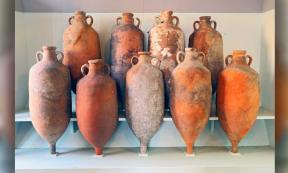Roman Chronology
The chronology of Ancient Rome divides this long history into standard periods used by historians, from its legendary foundation to its eventual decline and fall.
Rome's history spanned over a thousand years, from its humble beginnings as a small village on the banks of the Tiber River to its status as the dominant superpower of the ancient world. Along the way, Rome underwent numerous transformations, from a monarchy to a republic, to an empire, and faced many challenges, including wars, political crises, social upheavals, and economic changes.
This section offers articles organized according to a chronological order of the key milestones in Rome's history, including the reigns of its legendary kings, the forming of a republic, the Punic Wars with Carthage, the establishment of the Roman Empire, and the decline and eventual collapse of the Roman state. By exploring the rich tapestry of Rome's history, we gain a deeper appreciation of the enduring legacy of this remarkable civilization and its impact on the world we live in today.






































